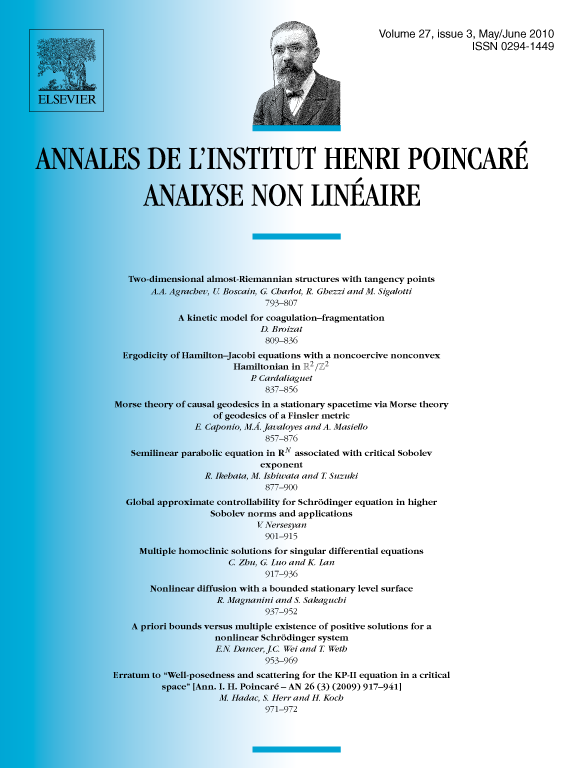Nonlinear diffusion with a bounded stationary level surface
Rolando Magnanini
Dipartimento di Matematica U. Dini, Università di Firenze, viale Morgagni 67/A, 50134 Firenze, ItalyShigeru Sakaguchi
Department of Applied Mathematics, Graduate School of Engineering, Hiroshima University, Higashi-Hiroshima, 739-8527, Japan

Abstract
We consider nonlinear diffusion of some substance in a container (not necessarily bounded) with bounded boundary of class . Suppose that, initially, the container is empty and, at all times, the substance at its boundary is kept at density 1. We show that, if the container contains a proper -subdomain on whose boundary the substance has constant density at each given time, then the boundary of the container must be a sphere. We also consider nonlinear diffusion in the whole of some substance whose density is initially a characteristic function of the complement of a domain with bounded boundary, and obtain similar results. These results are also extended to the heat flow in the sphere and the hyperbolic space .
Résumé
Nous considérons la diffusion non linéaire d'une substance dans un récipient (pas nécessairement borné) avec frontière bornée de classe . Supposons qu'initialement, le récipient soit vide et, à sa frontière, la densité de la substance soit gardée à tout moment égale à 1. Nous montrons que, si le récipient contient un sous-domaine propre à la frontière duquel la substance est gardée à tout moment à densité constante, alors la frontière du récipient doit être une sphère. Nous considérons aussi la diffusion non linéaire dans tout d'une substance dont la densité est initialement une fonction caractéristique du complémentaire d'un domaine ayant la frontière bornée et , et nous obtenons des résultats semblables. Ces résultats sont aussi généralisés au cas du flux de chaleur dans la sphère et l'espace hyperbolique .
Cite this article
Rolando Magnanini, Shigeru Sakaguchi, Nonlinear diffusion with a bounded stationary level surface. Ann. Inst. H. Poincaré Anal. Non Linéaire 27 (2010), no. 3, pp. 937–952
DOI 10.1016/J.ANIHPC.2009.12.001